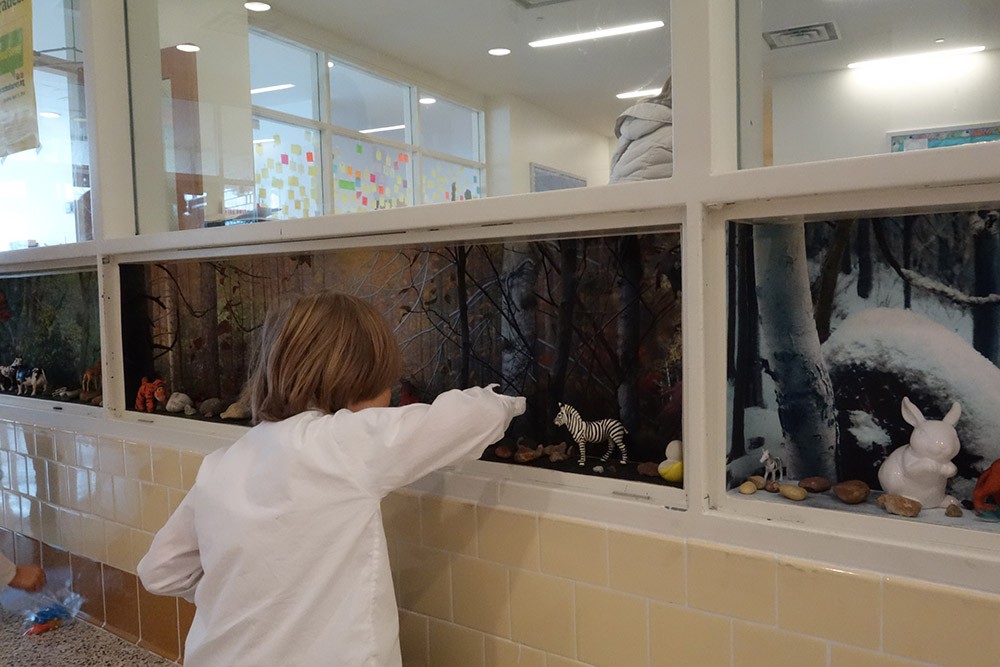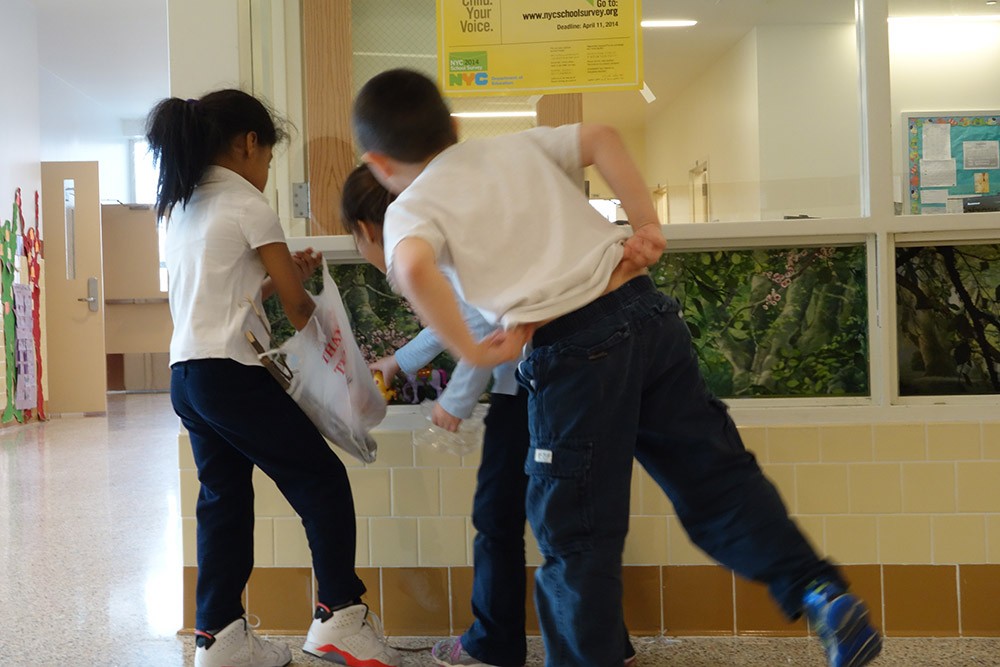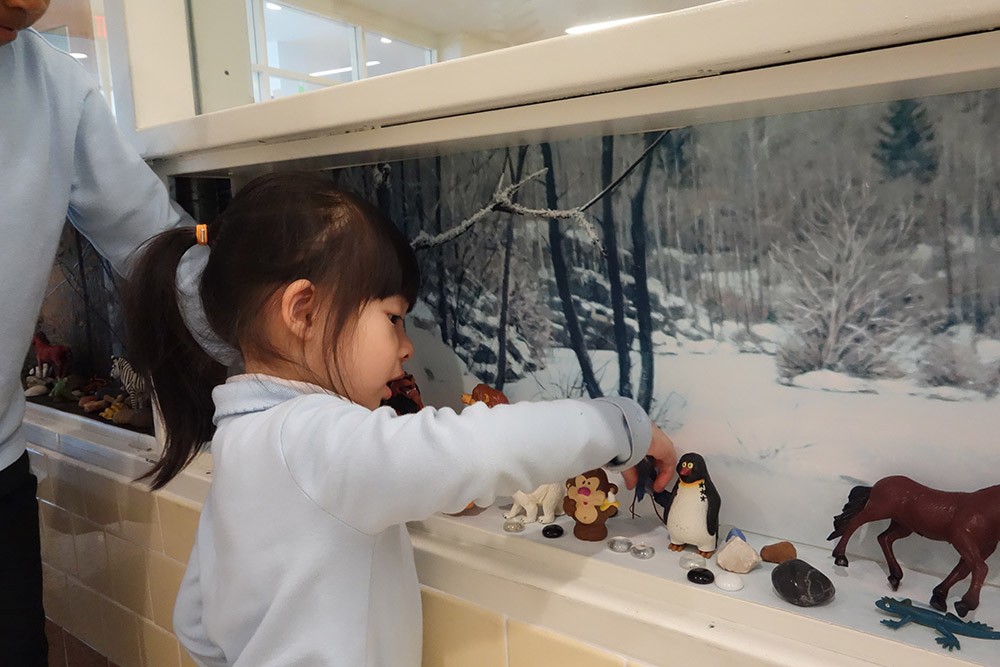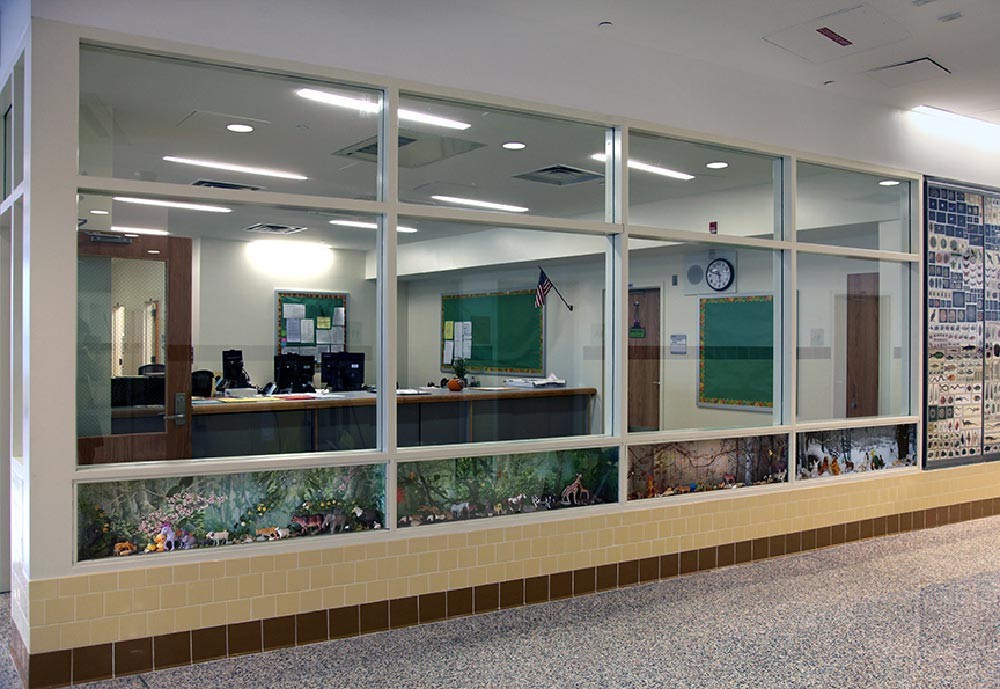Cabinet 1526-2013, 2013
Cabinet 1526-2013 was commissioned by the Department of Cultural Affairs, Public Art for Public Schools / Percent for Art program. The project proposes a way of viewing images about our world that is stable, historical, secure, and unchanging, as a counterpoint to the super-accessible and constantly changing images on the internet, where most children go now to find out about the world (Google images, web-based learning, digital interfaces, computer games). As part of an environment that children will travel through daily, the installation contrasts with the mutability of the web and the ubiquity of advertising images in their daily life. The fixed aspect of this installation creates a kind of grounded relationship with beautiful images of the natural world over an extended period of time that the internet can’t provide.
My reference point for thinking about this project is the encyclopedia as a symbol for, and first point of entry, into the idea of a taxonomy and classification of the natural world.
Inspired by scientific illustrations such as those of Albertus Seba and Carl Bertuch, I reproduced illustrations of the natural sciences in the public realm that I found online, and assembled these in a large cabinet-of-curiosity-like array.
Since all of the illustrations in the “cabinet” were made before photographic documentation was possible, each image represents hours of hand-rendered descriptive detail. They are meditative and extended technical studies of the natural world combined with hints of each artist’s subjectivity, and in many cases, imagination. A list of the artists included in the work is engraved into a steel panel at one side the installation. But they are not indexed: the images act like ciphers - clues to a large and complex world of objects and nature that can activate a motivation for research and discovery - to find out for one’s self. My hope is that not having immediate access to information at one’s fingertips encourages an engagement with the images based on wonder and imagination.
Percent for Art / Public Art in Public Schools,
Staten Island, NY
Summer 2013

Example of some sources:


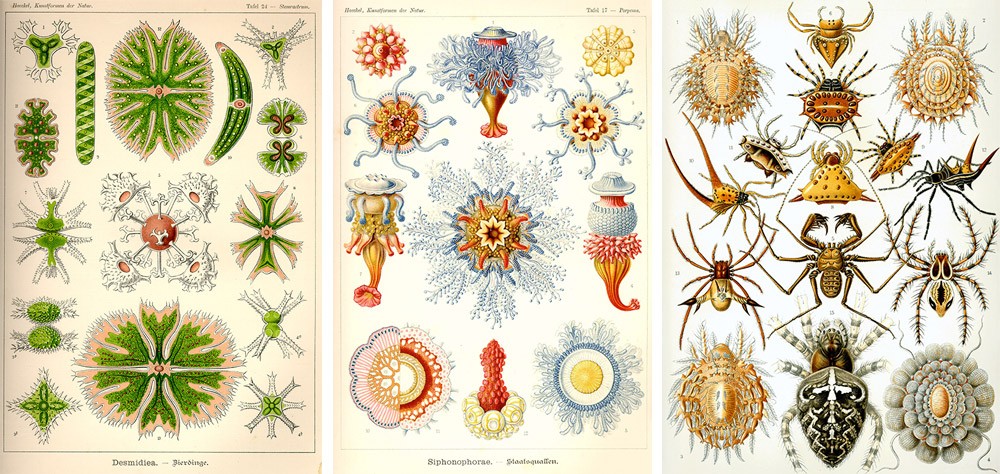

Example of 3 Panels – for each of the sources I found, I isolated the discrete drawings from their surrounding contexts, recontexualizing them into the array of images. I often maintained ‘like’ associations, but sometime skewed this completely creating collisions of scale (such as illustrations of cells next to star clusters, rocks next to planets) or implied possible narratives (an snake peering at a mouse):
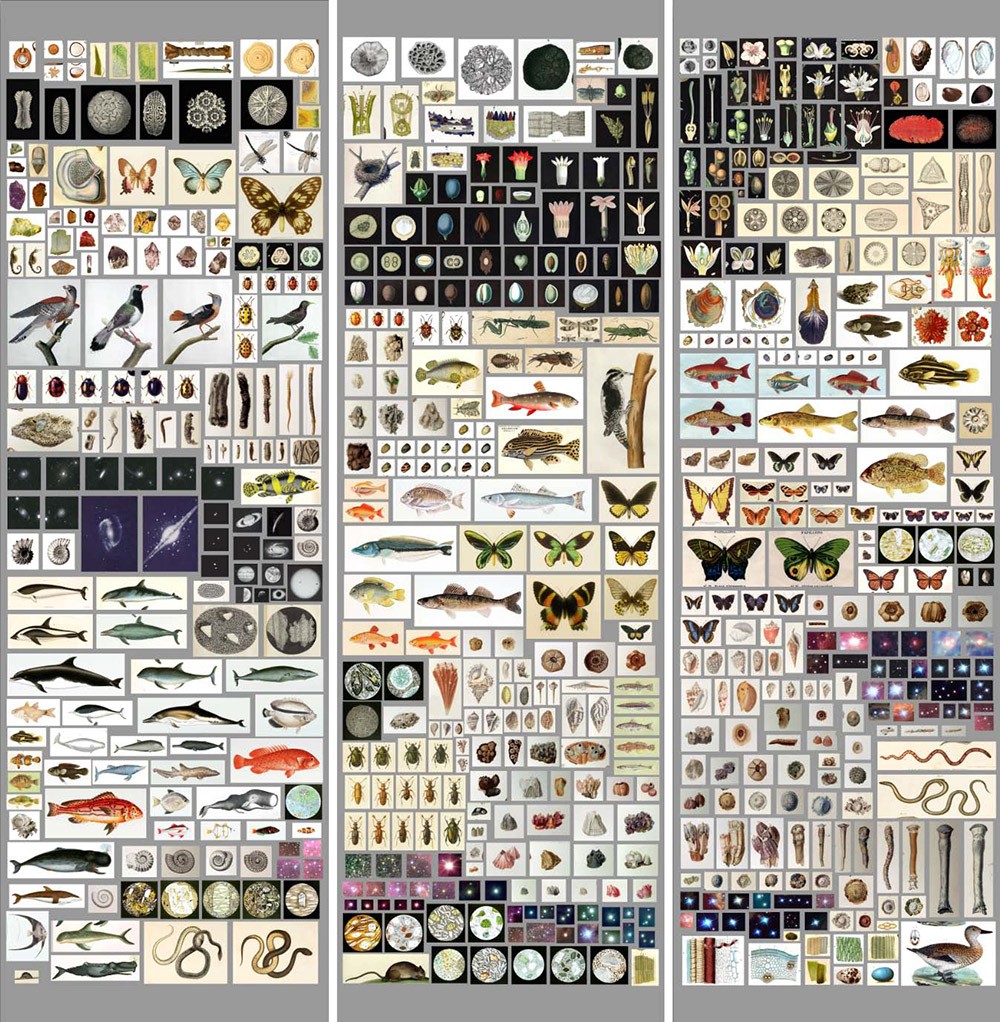
How the panels are put together (left: stainless steel retaining frame, safety glass, stainless steel ‘framework’, digital c-print of collaged images; right: the 4 components together):
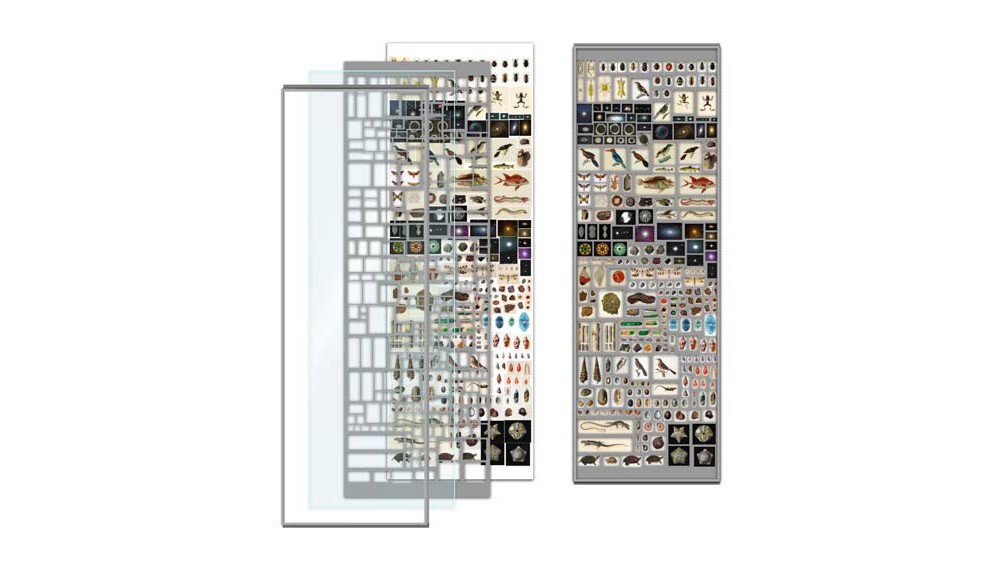
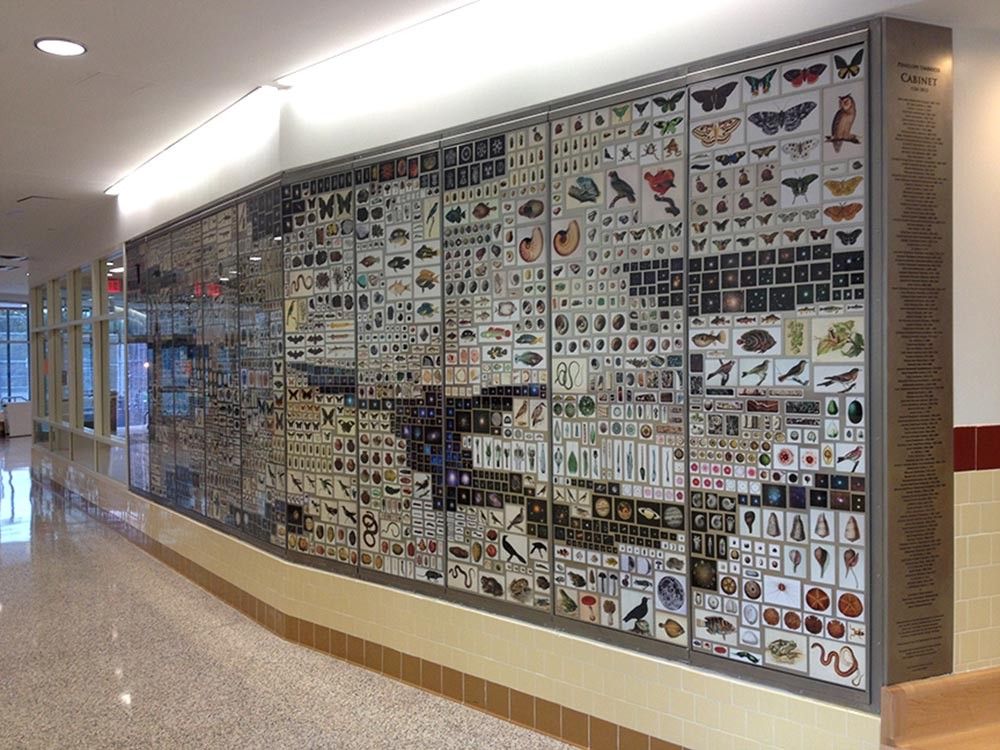
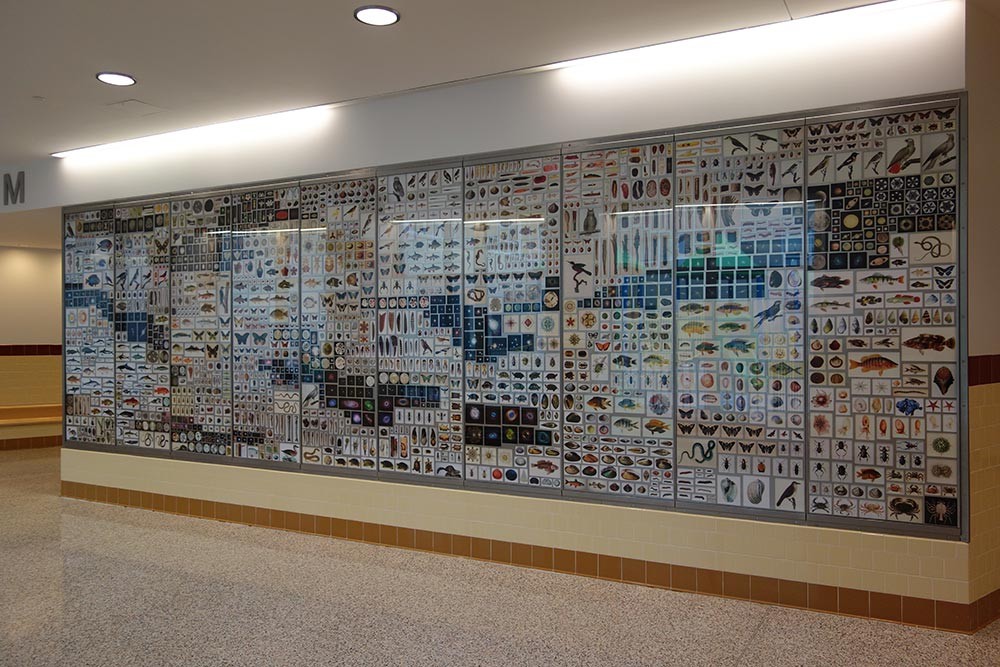
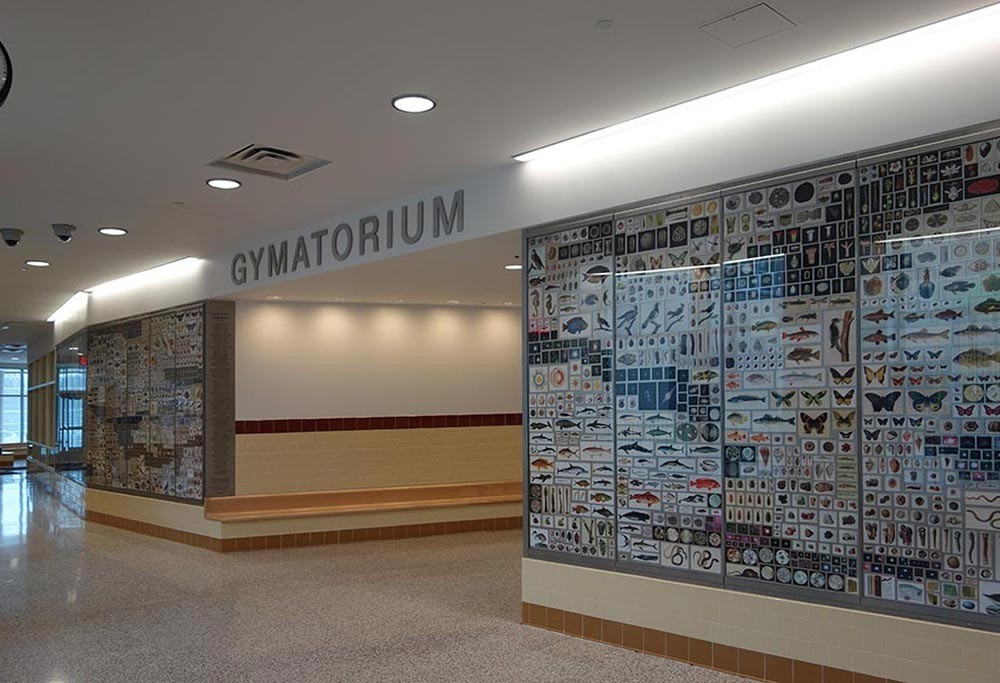
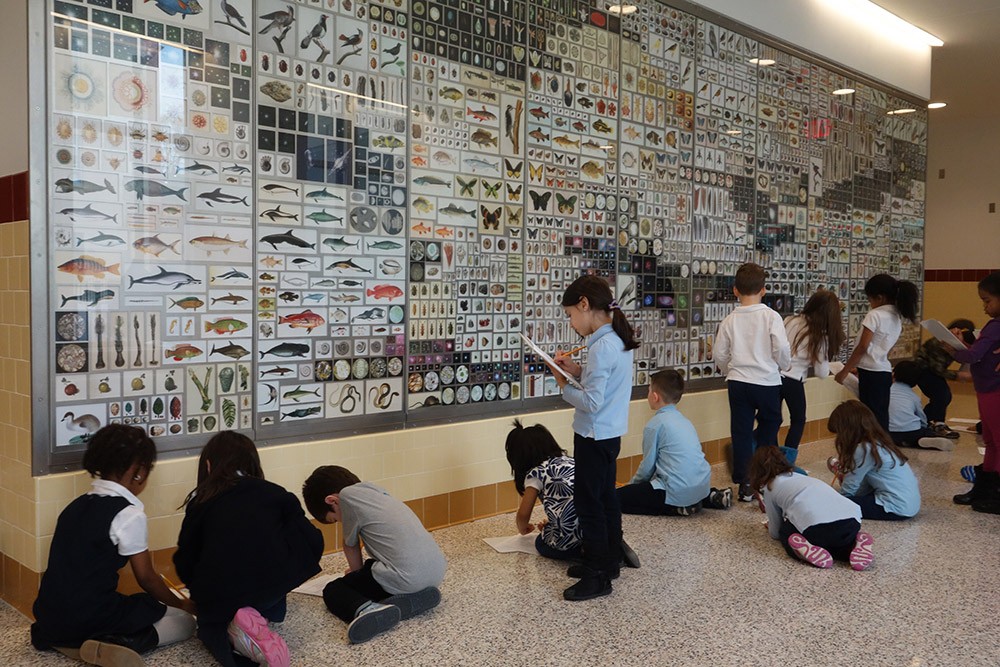
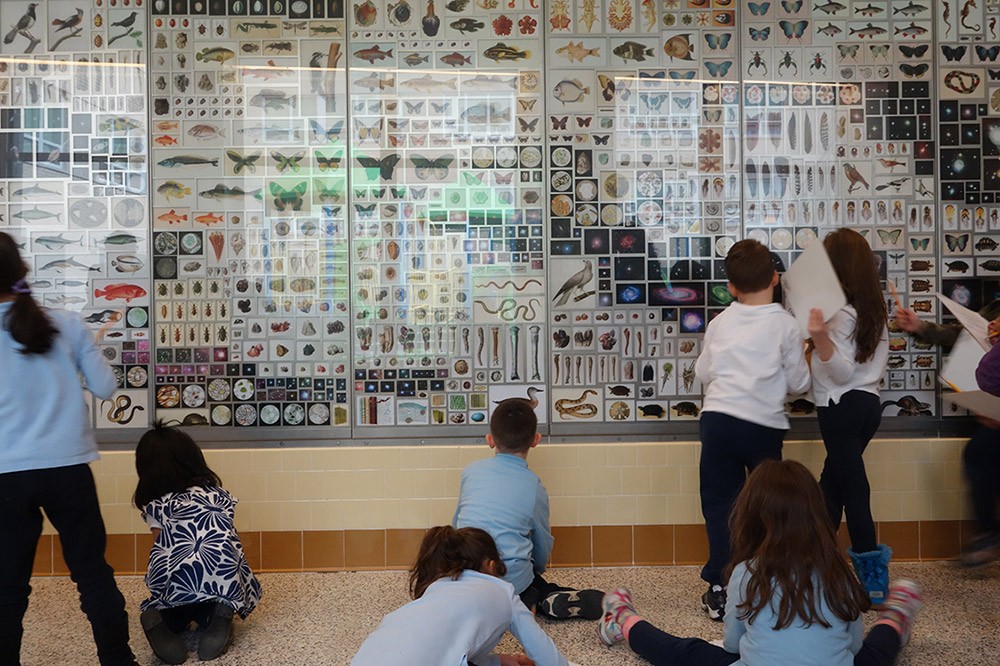
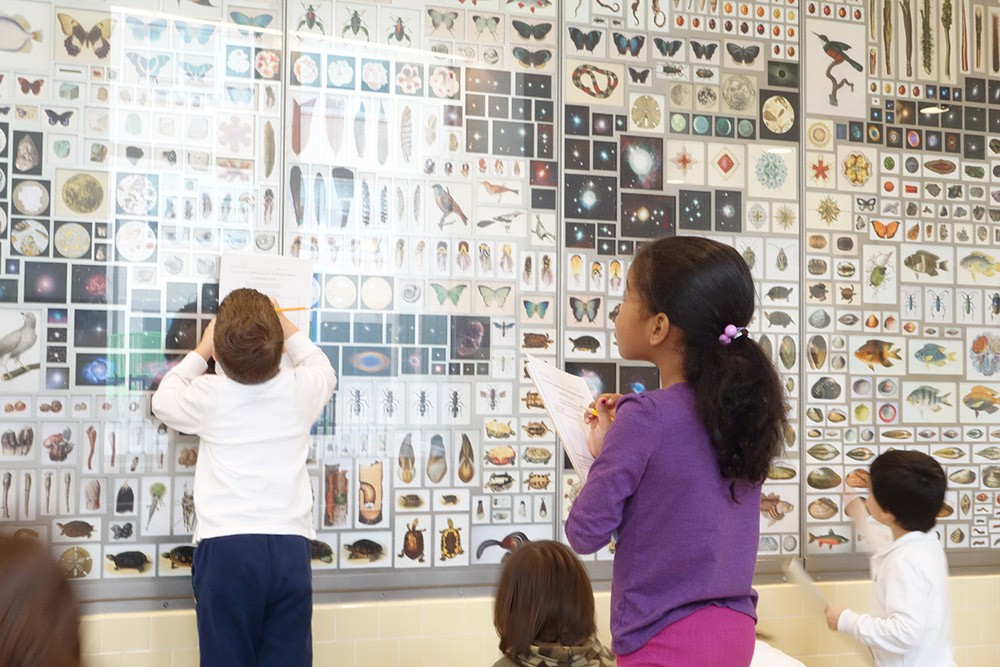
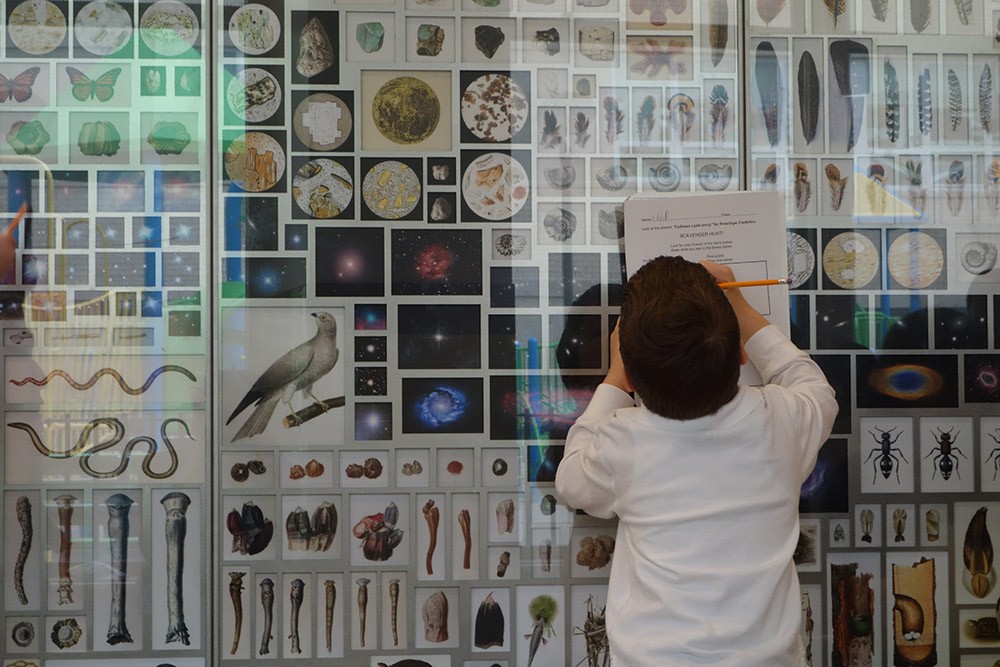
Our Dioramas (auxiliary project), Spring 2014
The longevity requirement for a new school building (and therefor the art) is 100 years. Given that the images in my installation are how we represented the natural world 100 years ago (roughly), I wanted the children to think about how we might view representations of the natural world we make today 100 years in the future. To this end, I asked the architects to augment the office windows beside my installation by adding a window section underneath to be used as shadow boxes. For the backdrops of each box, I digitally collaged multiple photographs I took of the dioramas at the Museum of Natural History, excluding the animals in favor of the vegetation and landscape (four windows - four seasons). After the wall installation was completed, I asked the first incoming kindergarten classes to bring plastic toys they felt represented the natural world (one toy per child), and we spent a day making dioramas in the boxes – time-capsule-like representations of how the children see the natural world today. When finished, the boxes were sealed with glass. 100 years from now these time-capsules will be as historical as the images in the wall installation are to the children today.
